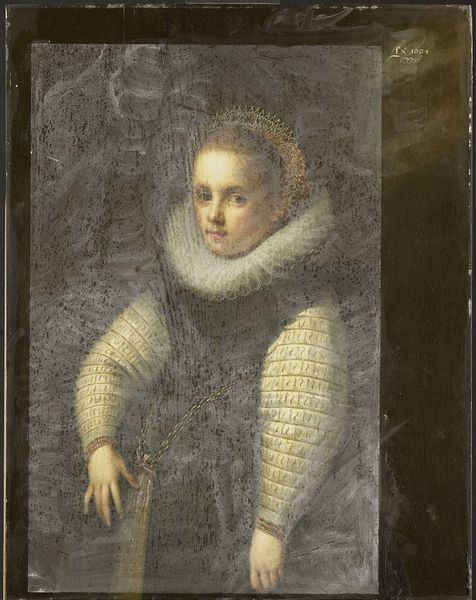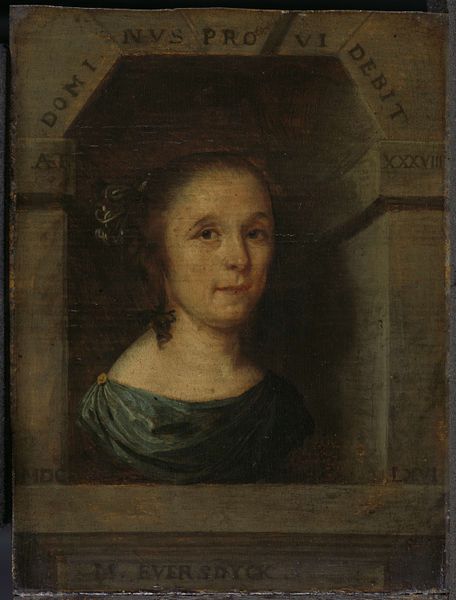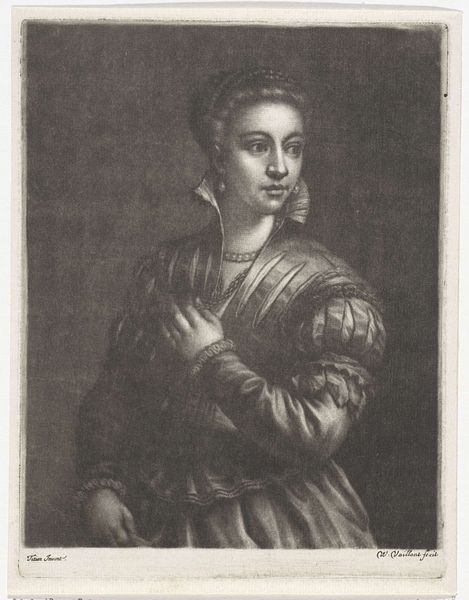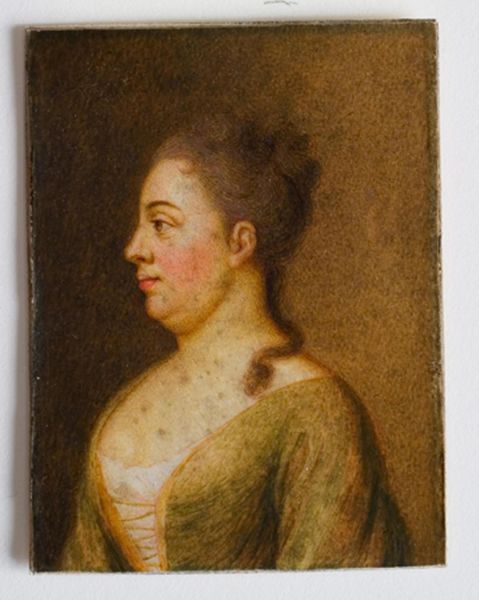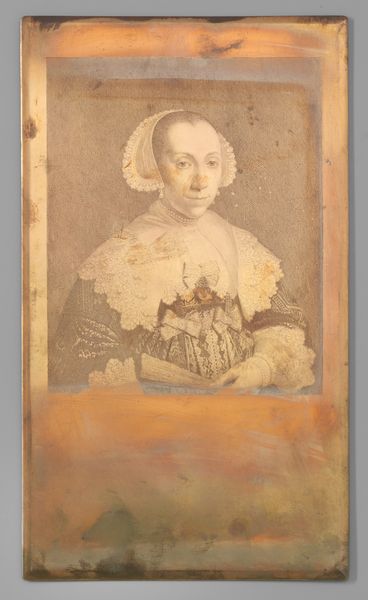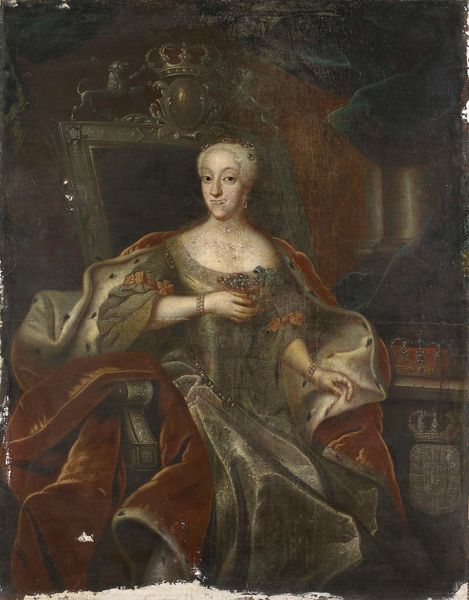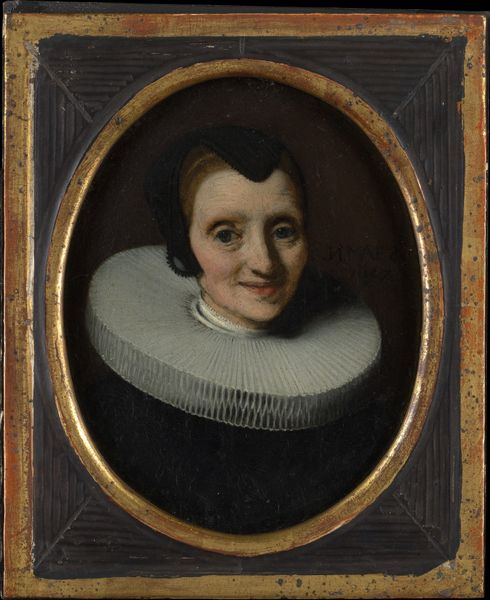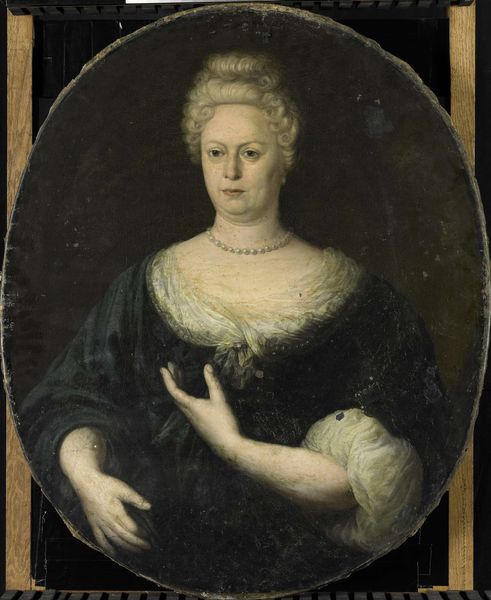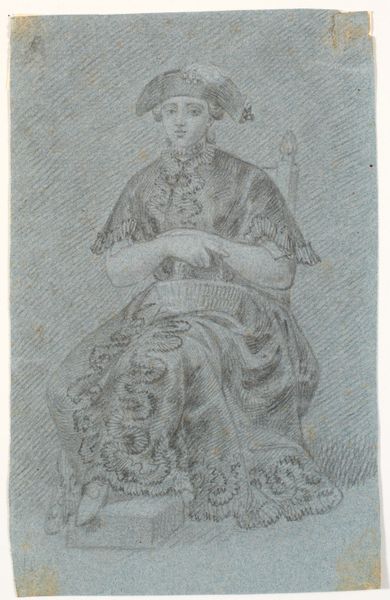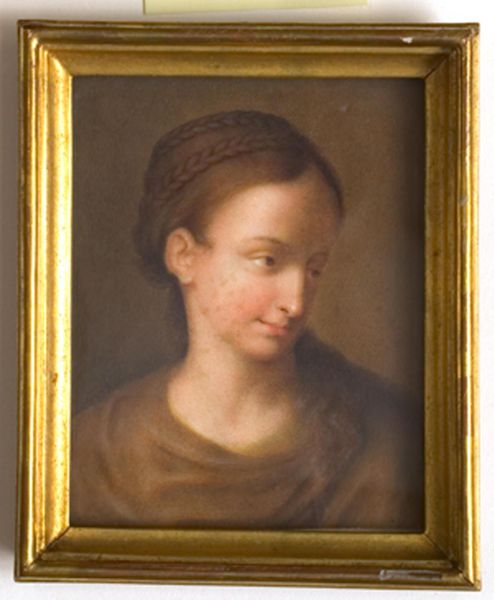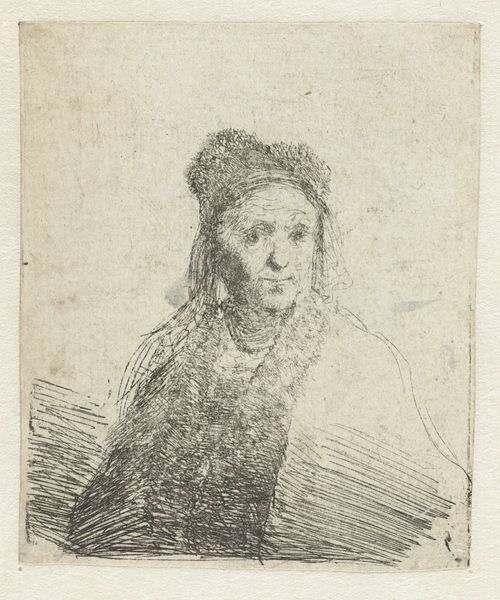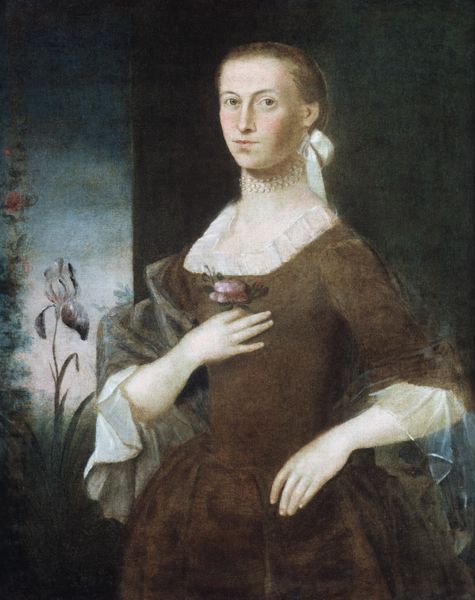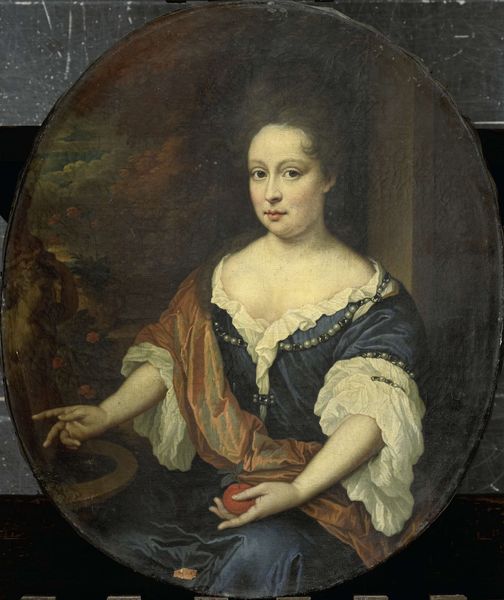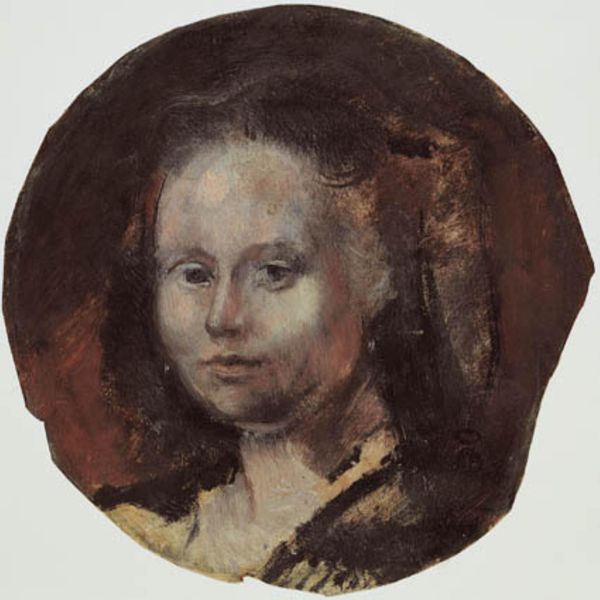
painting, oil-paint
#
portrait
#
painting
#
oil-paint
#
mannerism
#
painted
#
figuration
Dimensions: height 82.3 cm, width 63.4 cm, depth 7 cm
Copyright: Rijks Museum: Open Domain
Curator: Gortzius Geldorp painted this oil on panel in 1606. It’s titled "A Sister (b. 1600) of Catharina Fourmenois." Editor: The subdued color palette is striking; various tones of grey seem to suffuse every corner. Curator: The painting, belonging to the Mannerist style, presents us with more than just aesthetic value. Consider the context: the subject’s belonging to the Fourmenois family positions her within a complex network of familial and social standing in Antwerp. Her age, likely around six, becomes crucial when viewed alongside the social expectation and limitations imposed on women of her time. Editor: The details on her garment invite visual attention—floral patterns accentuating her sleeves with their delicate curves. And then there is that stark white ruff encircling her neck—visually compelling against the darkness of her dress. It's a lovely counterpoint, isn't it? Curator: The jewelry might speak volumes regarding her family’s affluence. How might those constraints—her class, her gender, her familial obligations—shape her identity at such a young age? Editor: Observe, too, how the planar elements intersect. The hard geometric lines surrounding the figure—almost as if boxes behind and beneath her. These shapes divide and constrain the space. It emphasizes a sense of compression, focusing our attention sharply upon her face. Curator: I think exploring the relationship between representation and lived experience is essential here. Her clothing reflects an ideology of modesty. But could this also function as a barrier that isolates women from wider social agency? Editor: Thinking about its materiality, the paint application—how the light interacts with the panel's surface, creating subtle textural contrasts—is quite arresting. These compositional arrangements create a very contained portrait, to me at least. Curator: Precisely; seeing this painting allows us to contemplate broader questions of gender, childhood, and the codification of identity during the early 17th century. It presents layered, contextualized meanings of existence. Editor: Absolutely, and focusing on form reminds us how artistic language and visual construction affect understanding the world then, and still now.
Comments
No comments
Be the first to comment and join the conversation on the ultimate creative platform.
